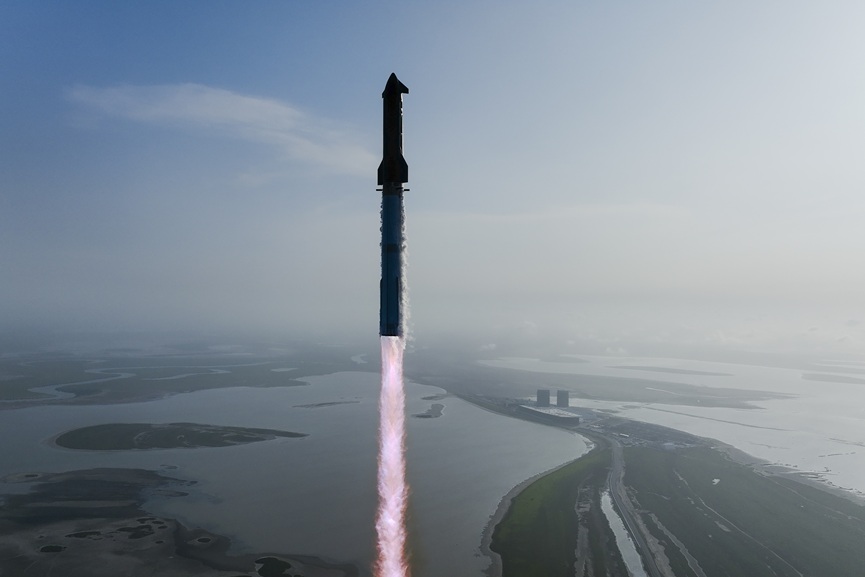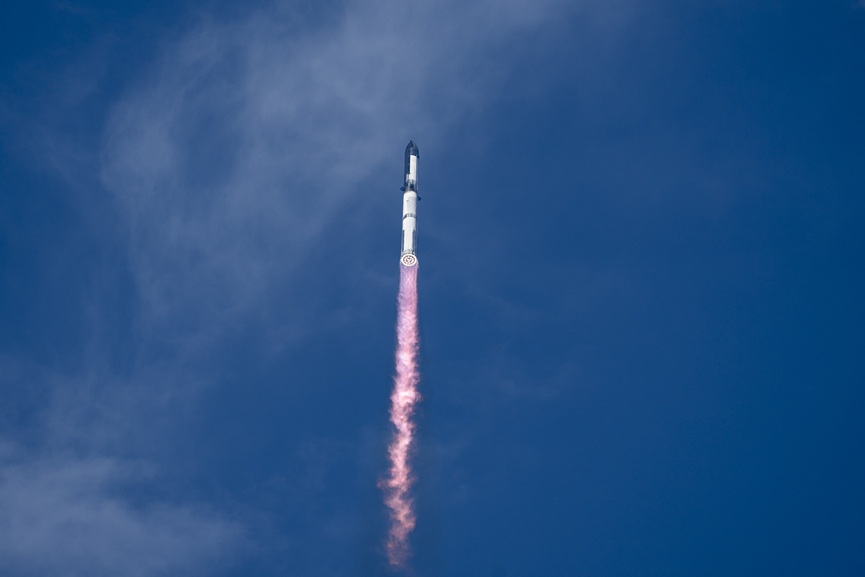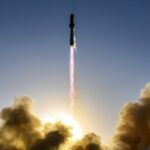Texas: SpaceX’s latest test flight of its Starship rocket failed on Tuesday after the upper stage began spinning uncontrollably due to a fuel leak, culminating in an explosion over the Indian Ocean.
The incident marks the third consecutive unsuccessful attempt this year as Elon Musk’s company pushes ahead with its ambitious plans to build a reusable system capable of reaching the Moon and Mars.
The uncrewed Starship Flight 9 launched at 6:36 p.m. local time (2336 GMT) from SpaceX’s Starbase facility in Boca Chica, Texas. It was the company’s most advanced flight attempt yet, with the rocket clearing key stages of ascent before encountering problems in space.

The Super Heavy first-stage booster, which was supposed to make a controlled splashdown in the Gulf of Mexico, exploded shortly after separation. Meanwhile, the upper stage of the Starship reached suborbital space but failed to complete its planned mission objectives.
A key payload deployment test involving a batch of simulated Starlink satellites was aborted when the vehicle’s doors failed to open. Shortly afterward, the spacecraft began to spin, and engineers initiated a fuel venting process to minimize the explosive force. Despite their efforts, the vehicle was ultimately destroyed in what SpaceX described as a rapid unscheduled disassembly.
SpaceX CEO Elon Musk offered a measured response, emphasizing progress over previous flights. Musk added that SpaceX plans to accelerate its testing timeline, with the next three launches expected every three to four weeks.
As if the flight test was not exciting enough, Starship experienced a rapid unscheduled disassembly. Teams will continue to review data and work toward our next flight test.
With a test like this, success comes from what we learn, and today’s test will help us improve Starship’s…
— SpaceX (@SpaceX) May 28, 2025
The test followed two earlier attempts this year, Flight 7 in January and Flight 8 in March both of which ended in explosions shortly after launch. While SpaceX successfully recovered the Super Heavy booster in March, the upper stage failed in both prior flights.
Starship, the largest and most powerful rocket ever built, is critical to NASA’s Artemis program, which plans to return humans to the Moon in 2027.
Despite the repeated setbacks, SpaceX remains committed to its iterative development approach, viewing each test as a step forward in achieving a fully reusable deep-space transportation system.
























